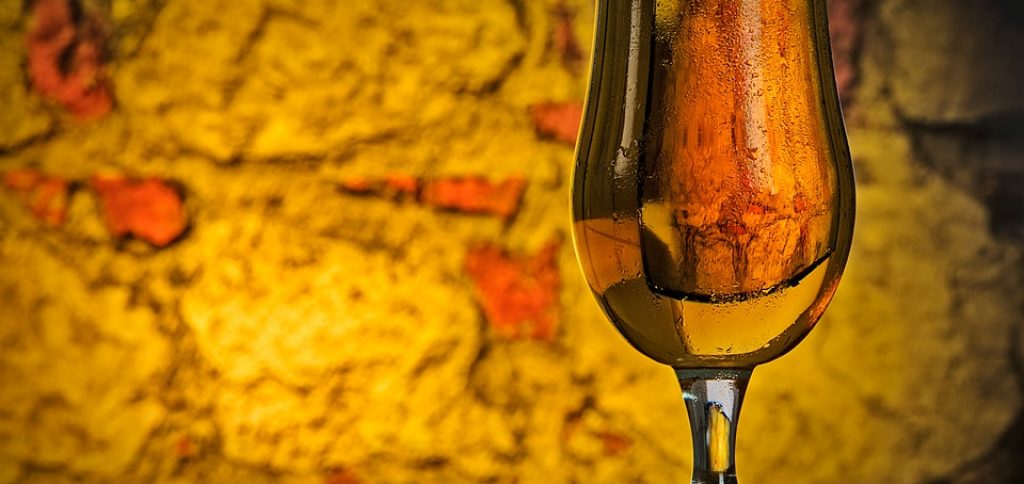Non-alcoholic beer as a lifestyle product

Alcohol-free beers are in fashion, thanks to the international boom in fitness and health. The new varieties are often brewed with creative mixtures of hops and malt, so that they barely differ in taste from regular beers.
Alcohol is known to be a flavor carrier. That is why 0% beers have long held the reputation of being boring, watery, characterless and uninspiring. Now, however, alcohol-free specialties are experiencing a change of image internationally. According to the latest figures from the German Brewers’ Association in Berlin, “unleaded” brews in various forms and styles are very much in vogue. And they aren’t just the well-known classics; instead, there are new creations with exciting aromas of hops and malt, many of which come from craft beer breweries.
Germany the trendsetter: 400 varieties of non-alcoholic beer
Germany is still the undisputed leader when it comes to producing non-alcoholic beers: Last year, the Brewers’ Association calculated a total output of around 5.5 million hectoliters, or slightly more than 6% of the entire local beer production. Germany is an El Dorado for health fanatics, with lovers of non-alcoholic brews now able to choose between around 400 varieties. In addition to pilsner, lager, or wheat beer, fans can enjoy lesser known styles from the craft beer scene such as pale ale, IPA, and stout. Experts are certain that the importance of these varieties will continue to increase, because the days when non-alcoholic drinks were only interesting for motorists are long gone. “Today, alcohol-free beer is a lifestyle drink that impresses people with its variety and taste,” confirms Holger Eichele, Managing Director of the German Brewers’ Association in Berlin.
Special processes for a maximum of 0.5% alcohol
But are such beers really always completely alcohol-free? Not quite: while in Spain or France brews with 1% alcohol content may still be declared as alcohol-free, in Germany beer can only be labeled this way if it has a maximum of 0.5% alcohol. However, these low levels of alcohol are said to have no significant impact on the human body or the ability to drive. And alcohol levels like these can even be measured in fruit juice, kefir, or sauerkraut!
However, the production of non-alcoholic beers requires substantial technical effort and special processes during brewing. The most common methods are interrupted fermentation, in which the fermentation process is stopped at 0.5%, or a process in which ethanol is removed later on. The use of special yeasts with a low degree of fermentation is also becoming increasingly popular.
Tasty lightweights
The ü.NN (überNormalNull), a beer from Hamburg-based Kehrwieder Kreativbrauerei, is considered a prime example of the latter process. For his unfiltered, 0.4% IPA, Oliver Wesseloh uses a special yeast that produces little alcohol. Meanwhile, selected hop varieties bring full fruit flavors of mango and pineapple to the beer, so that its character is anything but boring. Even interesting bitter notes – due to the mix of hops – are discernible. Beer fans who are unaware they are drinking non-alcoholic beer would probably scarcely guess the fact.
Another German top seller among the tasty lightweights is Liberis 2+3 from the Riegele brewery in Augsburg. Two specialty yeasts and three hop varieties – Amarillo, Mandarina Bavaria, and Simcoe – conjure up a tropical flavor profile. The Riegele team has already won various beer awards for this brew.
Alcohol-free goes international
But non-alcoholic beers are in vogue in other countries, too, and are enjoying growing popularity internationally. The Nirvana Brewery in London, for example, specializes exclusively in low or alcohol-free beers. In addition to its Kosmic Stout, which tantalizes the palate with notes of chocolate and vanilla, the brewery’s portfolio also features an alcohol-free English-style pale ale called Tantra and a non-alcoholic but crisp and fruity IPA. The aim of the UK brewery is to get rid of the “tasteless image” of such beers and to revolutionize the market with flavorful alcohol-free wonders.
Moving further north, the Scottish brewery Brewdog boasts a 0.5% amber IPA called Nanny State. The Scots achieve a full flavor through the addition of eight different malts and five special hop varieties. The Danish star brewer Mikkel Borg Bjergsø is also proving with his Mikkeller brand and several low-alcohol brews that there can be a lot of taste and creativity in this segment. He is now planning a whole alcohol-free series under the name Flemish Primitive. The first variety, a wild ale, just came on the market and is called Henry & his Science.
Beer for health
While German, English, and Scottish brewers describe themselves as pioneers of the alcohol-free trend, other nations are also increasingly dabbling in these brews. vandeStreek bier in Utrecht, for example, produces a non-alcoholic ale called Playground with Mosaic, Citra, and Cascade hops. And Polish beer producers are also backing a full, alcohol-free hoppy flavor. Browar Kormoran in Olsztyn refines its 1 na 100 Lite APA with the Citra variety and uses special rye malt. The brewery team advertises its beer as ideal for after-sports relaxation. After all, non-alcoholic beer is low in calories, rich in vitamins, and isotonic – and therefore perfect health-wise. It reportedly compensates for fluid loss and minerals that have been lost when sweating. This is a big advantage, because this allows sporty beer aficionados to combine two hobbies and then drive home without any problems.
